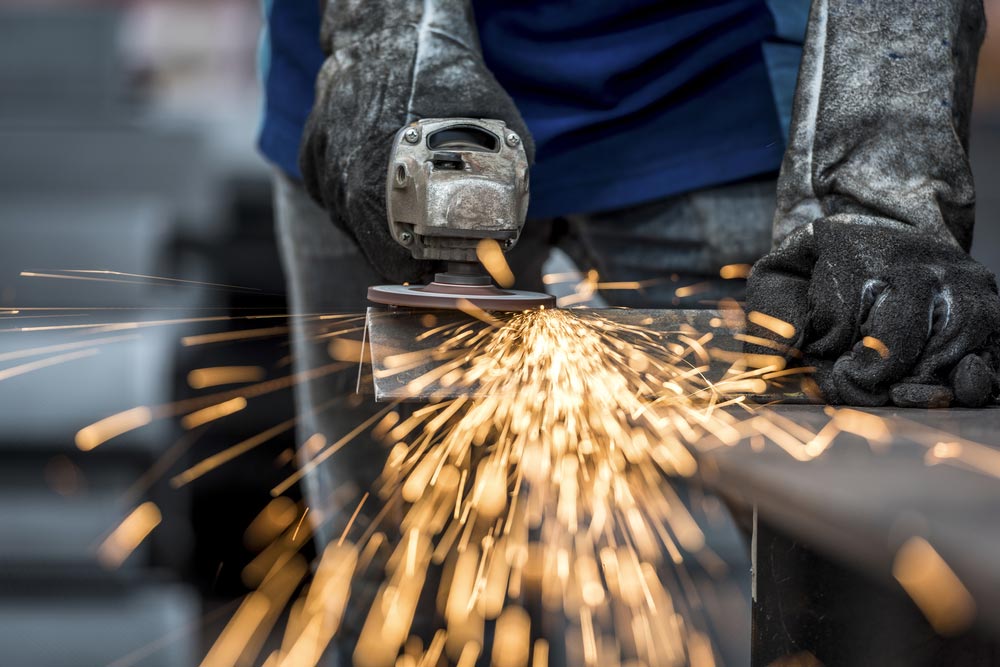Call Now For a Free Quote
07 5437 0817
Blog > Steel Stair Stringers - Everything You Need To Know
What Is Metal Fabrication?
Metal Fabrication refers to the transformation of raw material into a defined structure using certain tools and processes. The latter can usually be split into cutting, bending, and assembling or welding. It is a value-added process, meaning it turns raw metal into further project additions over time.
The Metal Fabrication Process, And How Welding Works
Metal Fabrication encompasses three main procedures: cutting, bending and assembling. As the name may suggest, cutting involves breaking down metal sheets into smaller parts that a fabricator can manipulate to meet the needs of a project.
Bending refers to the way fabricators can manipulate metal through force, with a hammer or heavier machines such as press brakes. Tube benders also provide a cylindrical shape if needed.
Welding is the use of high temperatures to seamlessly fuse metal. Tungsten Inert Gas Welding provides a weld with a lower chance of needlessly distorting the metal, and Metal Inert Gas Welding provides additional cost-effectiveness and speed.
Metal Processing Tools
Metal Fabrication and Processing relies on a lot of common tools, with simple solutions like saws and chisels used to cut metal and hammers used to deform it. It also employs specialist machinery designed for these rigorous tasks.
Though the old ways can easily work well with cutting, sometimes more high-tech answers are required. This need has been met by the development of laser and plasma cutters; they utilise accelerated bursts of lasers or high-temperature plasma to cut metal.
The Press Brake bends metal, using the material’s ductility to shape it with a ‘punch’. This can be hydraulic, electric, mechanical, or even pneumatic. The hydraulic variant is best for extreme bends, and the pneumatic version is usually used for less intense deformations.
Aluminium Vs Steel
While fabricators use both in a litany of metal projects,
aluminium and
steel
are different enough to warrant serious consideration about which is better for the job at hand. As you can imagine, they each have a place in Metal Fabrication – but it again depends on the project.
Aluminium is more ductile than steel, making it easier to bend. On top of this, aluminium is around 1/3rd of the weight of steel. This makes it easier to manipulate and shape to specification – but it does mean that steel has higher durability that could serve it well in many contexts.
Aluminium is also resistant to corrosion and scratches that emerge during the processes, in contrast to non-stainless steel. There are many factors to be aware of (and neither can be called a clear winner) but the right material will always be used for the job.
Does My Project Need A Metal Fabricator?
If your project involves shaping metal, then in all likelihood it would benefit from the presence of a dedicated fabricator. They are experts in cutting, bending, and welding the material to the right specifications, and have all of the right tools to get the job done.
On the Spot Steel Fabrication has been in business for over a decade now, and our Sunshine Coast clients trust us to ensure their project is fabricated to the highest standard. For more information on our services and a free quote,
contact us today.
Testimonials
We have used On the Spot Steel Fabrication for over 12 years for a variety of projects. Over this time Chris and his team of skilled fabricators have consistently produced outstanding results. On the Spot Steel Fabrication value workmanship and professionalism and have invested in the latest technologies to ensure all projects are accurately cut and fabricated to exact specifications. We have no hesitation in recommending On The Spot Steel Fabrication for any steel manufacturing solutions.
- Landmark Products
About Us
On the Spot Steel Fabrication Sunshine Coast specialises in aluminium and steel fabrication, CNC drilling as well as structural steel supply and installation.
From large commercial projects through to small scale domestic projects, we provide high-quality workmanship at competitive rates.
Contact one of our friendly team for a free quote today!
QBCC: 1100024
Contact Us
Mon-Fri 07:00 am - 03:30 pm
Sat-Sun Closed
Locate Us





